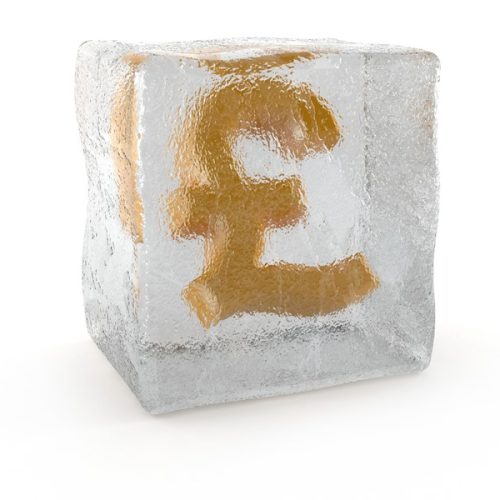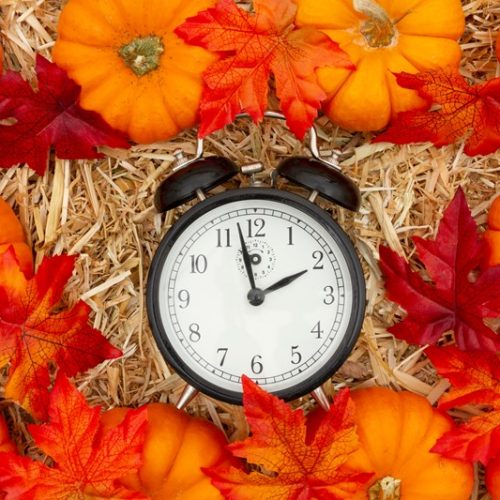

The second 2024-25 payment on account for self-assessment taxpayers is due on 31 July 2025. If you are finding it difficult to meet this tax bill, there are options available to ease the burden.
Taxpayers with liabilities of up to £30,000 can use the online Time to Pay (TTP) service to set up instalment payments. This service is available without the need for direct contact with an HMRC advisor and can be accessed up to 60 days after the payment deadline.
To be eligible for the online service, the following conditions must be met:
For those who do not qualify for the online option, alternative payment plans can be arranged. These plans are typically tailored to the individual's or business's specific financial situation, allowing repayment over an agreed period.
HMRC will generally grant extended payment terms if they believe you will be able to pay the full amount in the future. However, if HMRC determines that additional time won't resolve the issue, they may require immediate payment and take enforcement actions if the debt remains unpaid.

Since 6 April 2025, the remittance basis of taxation for non-UK domiciled individuals (non-doms) has been replaced by the Foreign Income and Gains (FIG) regime. This shift marks a significant change, as the new FIG regime is based on tax residence rather than domicile. Under the revised rules, almost all UK-resident individuals must report their foreign income and gains to HMRC, irrespective of whether they previously used the remittance basis or are now eligible for FIG relief.
For those former remittance basis users who no longer qualify for the new FIG relief, the treatment of newly arising foreign income and gains now aligns with the standard tax regime for UK residents. However, they will still be liable for tax on any pre-6 April 2025 FIG income and gains if they are remitted to the UK.
A key feature of the FIG regime is the 4-year FIG exemption for new UK residents. Individuals who have not been UK tax resident in any of the previous 10 tax years may opt to receive full tax relief on their FIG for up to four years. To claim this, individuals must submit a self-assessment return, with deadlines falling on 31 January in the second tax year following the relevant claim year.
Importantly, claims can be made selectively in any of the four years but must include quantified figures for income and gains; otherwise, tax will be due at standard rates. An individual’s ability to qualify for the 4-year FIG regime will be determined by whether they are UK resident under the Statutory Residence Test (SRT).

The impact of frozen personal allowances often leads to fiscal drag, a situation where individuals pay more tax as their earnings rise without a corresponding increase in allowances.
This occurs because tax thresholds remain fixed while wages increase, thus pushing more people into higher tax brackets or causing them to pay tax for the first time. Since April 2022, a number of key tax thresholds, including personal allowances, have been frozen and will remain so until at least the 2028-29 tax year.
Fiscal drag is largely driven by inflation, wage growth and the government's decision to keep tax thresholds unchanged. As inflation erodes the value of money, wages rise nominally, but without a rise in allowances, taxpayers are increasingly “dragged” into higher tax bands. This increases tax revenue for the government without changing tax rates, which is why HM Treasury often uses frozen thresholds as a means to boost tax receipts.
Adjusting tax thresholds to align with inflation or another index is referred to as "indexation." The government’s approach to increasing certain thresholds each year based on inflation is called "uprating." However, this policy is not consistently applied. When thresholds are frozen, tax revenues increase for HM Treasury without the need for any adjustments in tax rates. According to the latest estimate from the Office for Budget Responsibility (OBR), the freeze on Income Tax thresholds is projected to generate an additional £38 billion annually by 2029-30.

As of April 2025, more employers can claim the increased £10,500 Employment Allowance thanks to relaxed eligibility rules. This increase will help employers reduce some of the impact of the recent increases in employers' NIC.
The Employment Allowance allows eligible employers to reduce their National Insurance liability. The current allowance that applies from April 2025 is £10,500. Previously, the allowance was £5,000 per year. You can claim less than the maximum if this covers your total Class 1 NIC bill.
A claim for the Employment Allowance is usually made when filing your Employer Payment Summary (EPS) as part of the Real Time Information (RTI) submissions to HMRC.
The previous eligibility restriction, which limited the allowance to businesses with less than £100,000 in annual employer NIC liabilities, was removed with effect from April 2025. This change means that more employers can now qualify for the allowance.
Connected employers or those with multiple PAYE schemes will have their contributions aggregated to assess eligibility for the allowance. The Employment Allowance can be used against employer Class 1 NICs liability. It cannot be used against Class 1A or Class 1B NICs liabilities. The allowance can only be claimed once across all employer’s PAYE schemes or connected companies. De minimis state aid rules may also apply in restricting the use of the allowance.
Employment Allowance claims need to be re-submitted each tax year. There are a number of excluded categories where employers cannot claim the employment allowance. This includes limited companies with a single director and no other employees, employees whose earnings are within IR35 ‘off-payroll working rules’ and someone you employ for personal, household or domestic work (unless they are a carer or support worker).

1 August 2025 – Due date for corporation tax due for the year ended 31 October 2024.
19 August 2025 – PAYE and NIC deductions due for month ended 5 August 2025 (If you pay your tax electronically the due date is 22 August 2025)
19 August 2025 – Filing deadline for the CIS300 monthly return for the month ended 5 August 2025.
19 August 2025 – CIS tax deducted for the month ended 5 August 2025 is payable by today.
1 September 2025 – Due date for corporation tax due for the year ended 30 November 2024.
19 September 2025 – PAYE and NIC deductions due for month ended 5 September 2025. (If you pay your tax electronically the due date is 22 September 2025)
19 September 2025 – Filing deadline for the CIS300 monthly return for the month ended 5 September 2025.
19 September 2025 – CIS tax deducted for the month ended 5 September 2025 is payable by today.

A Tribunal has provided a landmark ruling over employer-employee status in the context of direct payments made under the Care Act 2014, ruling that an LA was not in fact the direct employer of a carer. The appeal revolved around the question of whether the LA was the de facto employer of V, who had provided care and support to his adult brother, S, between 2013 and 2020. V was paid directly by the LA via the Care Act 2014 under a contract of employment.
V claimed race and disability discrimination, as well as payment arrears, asserting a formal employment relationship with the LA. The Appeal Tribunal rejected all of V's claims and found no error of law in the original Tribunal’s approach, as there was no basis for an implied contract with V. The Tribunal’s findings of fact, such as his brother S's control of the budget, payslips naming S, and their family arranging cover, clearly pointed to S as the employer. The test for implying such a contract is a "necessity" in explaining the parties' actions, which was not met here, given the express contract with S.
As such, direct payments are a valid method by which an LA may discharge its statutory duty under the Care Act 2014. As to the issue of S's capacity to enter into a contract of employment, the Judge agreed with the LA that capacity is a matter for medical evidence and not mere assertion. Even if S had lacked capacity, it would have made the contract voidable, not void, and would not have necessitated an implied contract with the LA. This decision strongly affirms that LAs can effectively discharge their statutory duties under the Care Act 2014 by making direct payments, without automatically becoming the employer of the carers. This case illustrates how courts will seek to determine the identity of the employer in such direct payment arrangements. Those employed via such direct payment schemes are unlikely to be able to claim employment status with the LA unless there is compelling evidence that the LA retained significant and direct control over their day-to-day work. This case has far-reaching implications for freelancers and so employers should always seek to clarify whether any direct payments constitute a formal employer-employee relationship to avoid legal pitfalls.

Starting and growing a business is an exciting and demanding challenge. It is easy to focus all your energy on immediate goals like winning customers, generating income, and keeping cash flow under control. But at some point, every business owner will exit, whether through sale, succession, or closure. That is why having a clear exit plan is not just something for later; it adds value from the very beginning.
An exit plan sets out how you intend to leave the business and what outcomes you want to achieve. It might include selling the company, handing it over to a family member or management team, or winding it down in an orderly way. Crucially, it also considers what steps you need to take in advance to make that possible.
Without an exit strategy, business owners can end up underprepared and undersold.
Many discover too late that their business is not ready to attract buyers or that its value is too tied up in their own efforts to run it. Others face difficult decisions when ill health, retirement, or unexpected events force them to exit without a plan.
By contrast, owners who start preparing early can take practical steps to increase business value, reduce risk, and make the eventual transition smoother. This might include documenting key processes, developing a strong management team, reviewing ownership structure, or getting clear on financial performance. These are all steps that can help a business run more effectively in the present as well as the future.
Exit planning also helps you stay focused on what success looks like for you. Whether your aim is to achieve a target sale value, create a legacy, or secure a comfortable retirement, it gives you a measurable goal to work towards.
Reviewing the exit plan every few years ensures it stays aligned with your business’s progress and your personal circumstances. It can also highlight gaps or opportunities to make the business more attractive and resilient.
In short, having a plan for how you will leave your business is just as important as how you start it. If you have not yet created or reviewed your exit plan, we are happy to help you explore your options and take the next steps to secure your long-term goals.

As we look ahead to the Autumn Budget 2025, it is clear that the Chancellor, Rachel Reeves, will be under pressure to balance public expectations with fiscal reality. A combination of reduced growth forecasts, increased borrowing costs, and the reversal of planned welfare savings has narrowed the government’s room for manoeuvre.
Early signals suggest that the upcoming Budget, expected in late October or early November, will avoid headline-grabbing tax rate increases but may rely instead on less visible means of raising revenue.
One of the most likely measures is a further extension of the freeze on Income Tax thresholds. This approach, known as ‘fiscal drag’, increases the tax take without altering rates by pulling more taxpayers into higher bands as earnings rise. For many clients, this could mean a higher overall tax burden despite unchanged tax rates.
We also expect a closer look at Capital Gains Tax (CGT). Recent years have seen CGT receipts fall short of Treasury forecasts. This may prompt a review of CGT rates and allowances, especially for higher earners. Clients who are considering asset disposals may benefit from planning ahead of any potential changes.
Inheritance Tax (IHT) is also under the spotlight, especially following protests in the agricultural sector. Proposals such as tightening asset reliefs or reforming lifetime gifting rules could impact clients with family businesses or larger estates. It may be timely for those affected to review succession plans.
There is also speculation that the Chancellor will examine tax reliefs linked to ISAs and pensions. Any restriction here could affect retirement planning strategies, particularly for those making full use of current allowances.
While a rise in corporation tax has been played down, the Chancellor may still consider smaller adjustments to employer National Insurance or sector-specific tax reliefs. Departmental spending cuts and changes to benefit entitlements may also be used to help bridge the fiscal gap.
In summary, the Autumn Budget 2025 is expected to raise between £10 and £15 billion through a range of threshold freezes and targeted tax relief reforms. Now is a good time for clients to review their tax and financial plans. We are here to support you in preparing for the changes ahead.
Please contact us if you would like to arrange a review of your personal or business tax position in advance of the Budget.

You may need to submit tax returns for someone who has died. As the personal representative, you are legally responsible for reporting income earned before and after death.
This person, known as the ‘personal representative’, is legally responsible for dealing with the deceased’s money, property and possessions. This includes reporting income earned both before death and income generated by the estate afterwards.
HMRC will inform the personal representative if self-assessment return is needed for the deceased. If so, they will send the necessary forms. To complete the return, the personal representative will need financial details such as:
The tax return must be sent by post to meet the deadline provided in HMRC’s letter. The personal representative can also appoint an accountant or other professional to assist in compiling the tax return.
If the estate continues to generate income (e.g., from rent or investments), the personal representative may also need to:

You must tell HMRC if you no longer need to file a tax return. Whether you have stopped trading or no longer rent out property, notifying HMRC early avoids penalties and keeps your records up to date.
If your circumstances have changed and you believe you no longer need to complete a self-assessment tax return, then it is important to notify HMRC as soon as possible. This gives HMRC time to review your request and update your records before the 31 January filing deadline. Penalties could be incurred if you do not inform HMRC in a timely manner.
You may no longer need to submit a tax return if, for example:
If you are unsure, HMRC provides an online tool to help you check if you need to submit a self-assessment return. This can be found at https://www.gov.uk/check-if-you-need-tax-return
You can notify HMRC that you no longer need to submit a tax return by signing in to your online account and completing an online form to close your self-assessment account, You can also use this form to request removal from self-assessment for a particular tax year. You will need to have your National Insurance and Unique Taxpayer Reference (UTR) numbers in order to complete the form. Alternatively, you can contact HMRC by phone or post if you are unable to use the online service.
After submitting your request, you can track its status online. HMRC will confirm in writing whether you still need to file a self-assessment tax return.